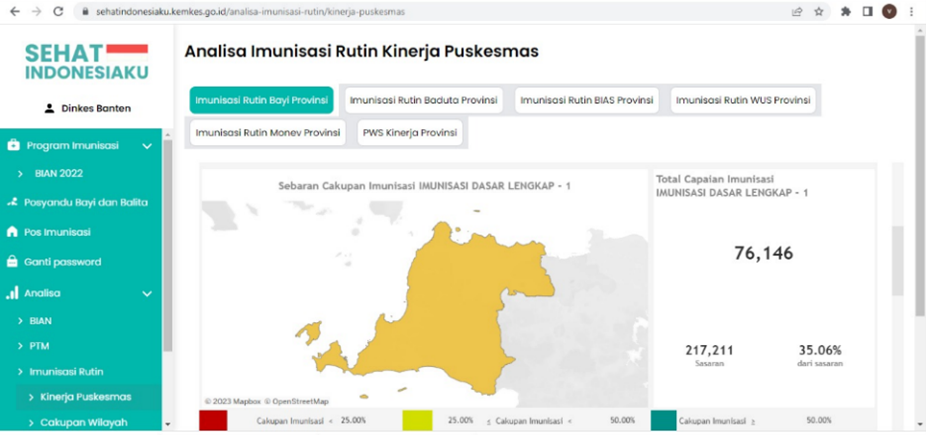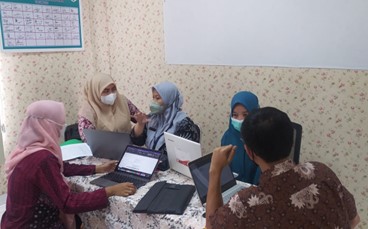Since accurate and reliable data is crucial for successful immunization planning and implementation, the Ministry of Health (MoH) developed the digital registry Aplikasi Sehat Indonesiaku (ASIK), which enables health workers and cadres to swiftly and systematically input the latest data. ASIK facilitates real-time monitoring of vaccination coverage rates by policymakers and identification of gaps in immunization efforts for corrective action.
But not all healthcare workers and cadres comprehend the application and are committed to it. For example, in April 2023, Banten province had large data gaps, amounting to 30% between ASIK and manually recorded data. Subnational health offices also faced challenges in analysing immunization data. In South Sulawesi, the largest province in eastern Indonesia, ASIK records showed that more than 160 000 children had not received immunization to protect them from diphtheria, pertussis, tetanus, hepatitis B, and haemophilus influenzae type B in January 2023. These data are immensely valuable if health workers can analyse and utilise them for follow-up action.

ASIK application dashboard. Credit: MoH
In response, WHO collaborated with Banten PHO Banten to initiate a data-centric approach. South Tangerang District, for example, started to do a monthly monitoring and evaluation session with the heads of primary healthcare centers (Puskesmas). In addition, private health facilities started recording in ASIK. Meanwhile, Tangerang District decided to conduct on-the-job training in one Puskesmas each day. Both districts compared coverage numbers recorded in ASIK and in manual reports on a weekly basis. As a result, by November 2023, the data gap in Banten was only 6%.
Across the sea, South Sulawesi PHO worked with WHO on analysing and interpreting ASIK data, identifying eight districts that were facing significant challenges. Empowered by the data, the PHO and WHO conducted supportive supervision activities and training sessions. This led to three months of concentrated efforts in priority Puskesmas, leading to heightened surveillance, catch-up schedules, and efficient ASIK application reporting.
“The implementation of priority area analysis is highly beneficial, aiding programme staff in identifying issues, interventions, and districts that need immediate attention. This ensures that interventions carried out during visits are targeted and help prevent outbreaks of vaccine-preventable diseases,” said Ardadi, the CDC Manager of South Sulawesi PHO.

Tiara, Immunization Officer of South Tangerang DHO, trains healthcare workers of Puskesmas Bakti Jaya to use the ASIK application. Credit: DHO Tangerang Selatan/Tiara
These stories underscore the broader importance of data in Indonesia's immunization journey. The commitment to innovation, collaboration, and continuous evaluation emerges as a common thread. Indonesia, with its diverse geography and population, recognizes that strong data analysis is the key to identifying issues and implementing targeted interventions in every region.
As 2024 approaches, Banten plans to continue its weekly data review, monthly meeting for each district, and on the job training for Puskesmas with the lowest ASIK records. Menawhile, South Sulawesi plans to update area priority analysis for focus district intervention, conduct routine monthly meeting to evaluate data with DHOs, and provide immunization training for Puskesmas health workers that includes data gathering and analysis. All of these will guide future strategic planning, ensuring no child is left behind in Indonesia.
This activity is supported by the Australian Government.Written by Veronika Dwi Utami, Surveillance Officer, and Yurniati, IVD Consultant for South Sulawesi province, WHO Indonesia
